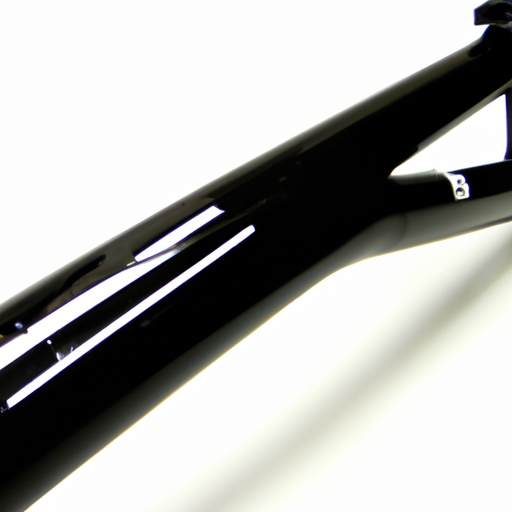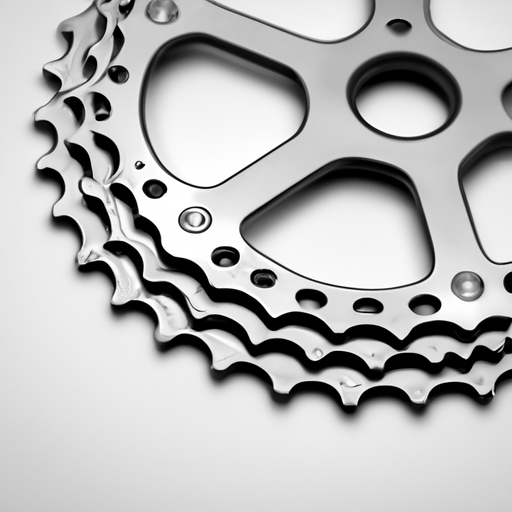What Is The Proper Way To Lubricate A Bicycle Chain?
You’ve just purchased a brand new bicycle and can’t wait to hit the open road. But before you can embark on your cycling adventures, you realize that you need to properly maintain your bike’s most vital component – the chain. Whether you’re a novice or an experienced cyclist, finding the right way to lubricate your bicycle chain is essential for optimal performance and longevity. In this article, we’ll explore the proper method to lubricate your bicycle chain, ensuring a smooth and enjoyable ride every time. So grab your bike and let’s get started!
Why lubricate a bicycle chain?
The importance of lubricating a bicycle chain
Lubricating your bicycle chain is essential for maintaining its performance and longevity. The chain is a vital component of your bike, responsible for transferring power from your legs to the wheels. Without proper lubrication, the chain can become dry, create friction, and eventually wear out, resulting in decreased efficiency, increased resistance, and potential damage to other parts of the drivetrain.
Regular chain lubrication is necessary to reduce friction and prevent premature wear. By keeping the chain properly lubricated, you can ensure smooth shifting, quiet operation, and efficient power transfer, ultimately enhancing your cycling experience.
Benefits of regular chain lubrication
By consistently lubricating your bicycle chain, you can reap several benefits. The primary advantage is reduced friction, which minimizes the energy loss as you pedal. This means you can cycle more efficiently and effortlessly, especially during longer rides or challenging terrains.
Another advantage of regular chain lubrication is increased chain lifespan. The lubricant forms a protective barrier, preventing dirt, dust, and other contaminants from sticking to the chain. This significantly reduces the wear and tear on the chain, leading to a longer-lasting drivetrain and potentially saving you money on expensive replacements.
Moreover, properly lubricated chains operate quietly, which is especially important for those who prefer a noiseless ride. A well-lubricated chain ensures a smooth and silent cycling experience, allowing you to focus on enjoying the scenery or having a conversation with fellow riders without any distracting noises from your bike.
Choosing the right lubricant
Types of bicycle chain lubricants
There are various types of bicycle chain lubricants available, each with its own characteristics and purposes. The most common types include dry lubes, wet lubes, and wax-based lubes.
Dry lubes are ideal for riding in dry conditions as they create a thin, dry film that repels dirt and prevents it from sticking to the chain. Wet lubes, on the other hand, are designed for wet or rainy conditions, forming a thicker, more durable layer of lubrication that resists washing off. Wax-based lubes offer a balance between dry and wet lubes, providing excellent protection against dirt and moisture.
Factors to consider when choosing a lubricant
When choosing a lubricant for your bicycle chain, it’s essential to consider various factors:
- Weather conditions: Take into account the typical weather conditions you will encounter during your rides. If you frequently ride in wet conditions, a wet lube would be more suitable, while dry lubes are better for dry climates.
- Riding frequency and distance: If you ride your bike frequently and cover long distances, you may need a more durable lubricant. However, if you only ride occasionally or for short distances, a less durable lubricant may suffice.
- Compatibility: Ensure the lubricant you choose is suitable for your specific bicycle chain and drivetrain components. Some lubricants may not be compatible with certain materials or finishes, potentially causing damage.
- Ease of application: Consider how easy it is to apply the lubricant. Some lubes come in convenient spray bottles or drip applicators, while others require manual application using a brush or cloth.
By taking these factors into account, you can choose a lubricant that best suits your needs and ensures optimal performance for your bicycle chain.
Preparing the bicycle chain for lubrication
Cleaning the chain
Before applying fresh lubricant to your bicycle chain, it is crucial to clean it thoroughly. Over time, dirt, grime, and old lubricant can accumulate on the chain, affecting its performance. Follow these steps to clean your chain effectively:
- Use a degreaser: Apply a suitable degreaser to the chain to break down any old lubricant and dirt. You can use a dedicated bicycle chain degreaser or a mild solvent like isopropyl alcohol.
- Scrub the chain: Use a chain cleaning tool or an old toothbrush to scrub the chain and remove the loosened dirt. Pay attention to the rollers, plates, and pins, ensuring they are thoroughly cleaned.
- Rinse and dry: Once you have scrubbed the chain, rinse it with water to remove any remaining degreaser or dirt. Dry the chain thoroughly using a clean cloth or towel, ensuring there is no excess moisture.
By cleaning the chain before lubrication, you create a clean surface for the new lubricant to adhere to, ensuring optimal performance and reducing the risk of premature wear.
Inspecting the chain for damage
While cleaning the chain, take the opportunity to inspect it for any signs of damage or wear. Look for stretched links, tight links, or any visible signs of rust or corrosion. Additionally, check the chain’s overall condition, ensuring it is properly aligned and not showing any signs of excessive wear.
If you notice any significant damage or wear, it is advisable to replace the chain to prevent further issues and maintain the overall performance of your bike.
Proper application technique
Applying the lubricant
To apply the lubricant effectively, follow these steps:
- Position the bike: Place your bike in a stable position, either by using a bike stand or by leaning it against a secure surface. This ensures stability and allows you to access the chain easily.
- Apply the lubricant: Shake the lubricant bottle well to ensure proper mixing of components. Then, apply a small amount of lubricant directly onto the chain while rotating the pedals backward. Start from the inside of the chain, near the bottom bracket, and gradually work your way towards the derailleur.
- Be thorough but not excessive: Ensure each chain link is adequately coated with lubricant, but avoid over-lubricating. Applying too much lubricant can attract more dirt and debris, leading to potential issues in the long run. A thin, even layer of lubricant is sufficient for optimal performance.
Avoiding over-lubrication
Over-lubrication can be just as harmful as not lubricating the chain at all. When there is excess lubricant, it can accumulate on the chain, attracting dirt, dust, and other contaminants. This buildup can create a gritty paste that not only affects the chain’s performance but also contributes to increased wear and premature replacement.
To avoid over-lubrication, apply a conservative amount of lubricant and ensure it is evenly distributed across the chain. Remember that less is often more when it comes to lubricating your bicycle chain.
Distributing the lubricant evenly
After applying the lubricant, it is crucial to distribute it evenly throughout the chain to ensure optimal performance. To achieve this, rotate the pedals backward for a minute or two to allow the lubricant to penetrate and work its way into the chain links. You can also use a clean cloth to gently wipe away any excess lubricant, further ensuring an even distribution.
Properly distributing the lubricant helps ensure a smooth, quiet, and efficient ride by minimizing friction and maximizing power transfer.
Recommended frequency of lubrication
Factors that affect lubrication frequency
The frequency of lubricating your bicycle chain depends on various factors, including:
- Riding conditions: The conditions in which you ride, including the weather, terrain, and the presence of dust or dirt, greatly influence the frequency of lubrication. If you frequently ride in wet or dusty environments, you may need to lubricate your chain more often.
- Riding intensity: The amount and intensity of your cycling also play a role in determining lubrication frequency. If you participate in intense training or regularly push the limits of your bike’s performance, more frequent lubrication may be required to maintain optimal efficiency.
- Maintenance routine: Regular maintenance, including cleaning and inspecting your chain, can help identify when it needs lubrication. If you notice signs of dryness or increased resistance during your inspections, it may be time to lubricate the chain.
General guidelines for lubricating a bicycle chain
While the exact frequency may vary depending on the factors mentioned earlier, a general guideline for lubricating your bicycle chain is to do so every 100-200 miles of riding or every 5-10 hours of riding time. However, it’s important to pay attention to the specific conditions and performance of your bike to determine the optimal lubrication frequency for your needs.
Remember that under-lubricating or neglecting to lubricate your chain can lead to premature wear and decreased performance, while over-lubricating can attract dirt and cause unnecessary buildup. Finding the right balance and establishing a regular maintenance routine will ensure the longevity and optimal functioning of your bicycle chain.
Additional chain maintenance tips
Keeping the chain clean
In addition to regular lubrication, keeping your bicycle chain clean is crucial for its overall performance and lifespan. Here are some tips for maintaining a clean chain:
- Wipe down after rides: Use a clean cloth to wipe away any dirt or grime from the chain after each ride. This helps prevent the accumulation of debris and ensures a clean surface for the next lubrication.
- Regular deep cleaning: Performing a deep clean of your chain periodically, using a degreaser and scrubbing brush, can help remove stubborn dirt and grime that may have accumulated over time. This deep cleaning should be followed by a thorough lubrication.
- Use a chain cleaning tool: Investing in a chain cleaning tool, specifically designed to make the cleaning process easier and more effective, can be a valuable addition to your maintenance toolkit.
Replacing a worn-out chain
No matter how well you maintain your bicycle chain, it will eventually wear out and need replacement. Regularly inspect your chain for signs of wear, such as elongation or stiff links. If you notice significant wear or if the chain fails a chain wear indicator test, it is time to replace it.
Replacing a worn-out chain is essential to prevent damage to other drivetrain components, maintain optimal performance, and avoid potential safety hazards. You can either replace the chain yourself using a chain tool or seek the assistance of a professional bike mechanic.
Storing the bicycle in a dry place
When not in use, it is important to store your bicycle in a dry place to prevent moisture accumulation and rusting of the chain. Consider investing in a bicycle cover or storing your bike indoors, away from damp environments. By taking this simple precaution, you can ensure the longevity and performance of your bicycle chain.
In conclusion, lubricating your bicycle chain is a crucial part of regular maintenance to ensure optimal performance, efficiency, and longevity. By choosing the right lubricant, properly preparing the chain, applying the lubricant correctly, and maintaining a regular lubrication routine, you can enjoy a smooth and efficient ride. Additionally, regular cleaning, chain replacement when necessary, and proper storage contribute to the overall maintenance of your bicycle chain. Remember, a well-lubricated and well-maintained chain leads to a better cycling experience, allowing you to enjoy the open road with ease and confidence. Happy cycling!




